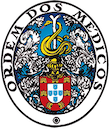Deficiência primária da secreção de insulina de ilhéus isolados de ratos Goto-Kakizaki. Um modelo animal de diabetes tipo 2 não obesa.
DOI:
https://doi.org/10.20344/amp.1755Resumo
The development of type 2 diabetes is associated with the impairment of insulin secretion. To evaluate the evolution of the secretory response, a chronological study comparing normal Wistar (W) vs Goto-Kakizaki (GK) rats, an animal model of non obese type 2 diabetes, was done. Glucose and arginine were tested in collagenase isolated islets of Langerhans with perfusion and ELISA immunoassay techniques. Fasting glycaemia and insulinemia and glucose tolerance were also evaluated. We have seen, in W rats, a mild glucose intolerance in the first two weeks of age. GK rats were always glucose intolerant with hyperglycaemia and hyperinsulinemia at fasten after one month old. Wistar islets had a characteristic biphasic response to glucose after the first two weeks of age. GK islets were always glucose irresponsive. Arginine induced an increase in insulin secretion in both animal models, independent of age, although GK rats had always a smaller response when compared to W rats. We concluded that 1) in W rats, a biphasic insulin secretion in response to glucose is observed after the first two weeks of age, simultaneously with glycaemia stabilization 2) in GK rats, both first and second phases of glucose-induced insulin release are significantly reduced and a smaller reduction in response to arginine is observed. This beta-cell disfunction is a primary event in this model of type 2 diabetes, preceding fasting hyperglycaemia and hyperinsulinemia.Downloads
Downloads
Como Citar
Edição
Secção
Licença
Todos os artigos publicados na AMP são de acesso aberto e cumprem os requisitos das agências de financiamento ou instituições académicas. Relativamente à utilização por terceiros a AMP rege-se pelos termos da licença Creative Commons ‘Atribuição – Uso Não-Comercial – (CC-BY-NC)’.
É da responsabilidade do autor obter permissão para reproduzir figuras, tabelas, etc., de outras publicações. Após a aceitação de um artigo, os autores serão convidados a preencher uma “Declaração de Responsabilidade Autoral e Partilha de Direitos de Autor “(http://www.actamedicaportuguesa.com/info/AMP-NormasPublicacao.pdf) e a “Declaração de Potenciais Conflitos de Interesse” (http://www.icmje.org/conflicts-of-interest) do ICMJE. Será enviado um e-mail ao autor correspondente, confirmando a receção do manuscrito.
Após a publicação, os autores ficam autorizados a disponibilizar os seus artigos em repositórios das suas instituições de origem, desde que mencionem sempre onde foram publicados e de acordo com a licença Creative Commons








